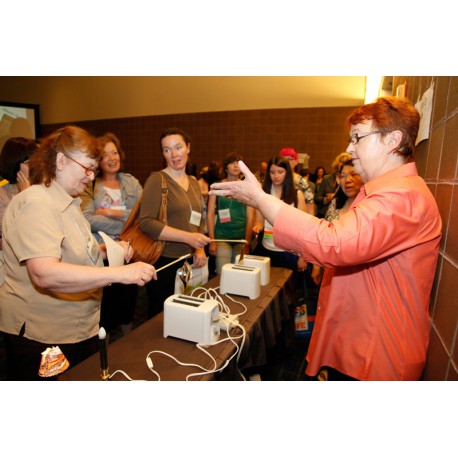 View larger
View larger
Can a Toaster Make Wind?
New activity
In this demo, patrons investigate the source of wind by using a toaster to heat air while they observe its effect on a small aluminum foil kite.
Open Activity
How-to Video
Teacher's Guide
Provides classroom connections, key concepts, connections to science standards, and additional resources.
-
Rating
-
Participants Enjoyed the ActivityParticipants Learned from This ActivityActivity Instructions Were Clear and Easy to FollowWould Recommend
Related Programming Resources
| Add a Tech Twist | A toaster is required. |
| Related Links |
Beaufort Wind Scale
Keeping a Daily Weather Log It’s Your Planet—Love It! Tornado in a Bottle Kites |
| Originating Source | Lunar and Planetary Institute/National Center for Interactive Learning |
| Related Books [Suggest a book] |
How does the wind blow? by Lawrence F Lowery and Betty Fraser
I face the wind by Vicki Cobb and Julia Gorton |
Reviews
Best for a Demonstration
I used this activity as an opening demonstration for a library event called “The Power of Wind.” The program was targeted for kids in grades K-6 and their caregivers were invited to stay. The other two activities I did during this event were “Puff Mobiles” and “Wind Streamer.”
This activity did not cost us anything – I used my toaster and some aluminum foil from home and found some wooden skewers in our craft closet that we used in place of the dowel. I was afraid that the kids would drop either the foil or the paperclip into the toaster, so they simply observed while I performed the experiment.
I started the session with a Bill Nye video from YouTube (https://www.youtube.com/watch?v=uBqohRu2RRk). This two minute video gave a brief overview of what causes wind. After the video, I followed the steps listed in the activity. The questions and answers provided in the STAR_Net pdf are well written and encouraged discussion as I performed the demonstration. Since I had a large age range, the answers to my questions were very varied and the predictions we polarized. Simply asking “can a toaster make wind?” split the group in half.
The entire demonstration including the video took just under 15 minutes. This activity doesn’t have enough to it for entire library program, but it made for a great introduction to wind and a great lead-in for the other two activities.



